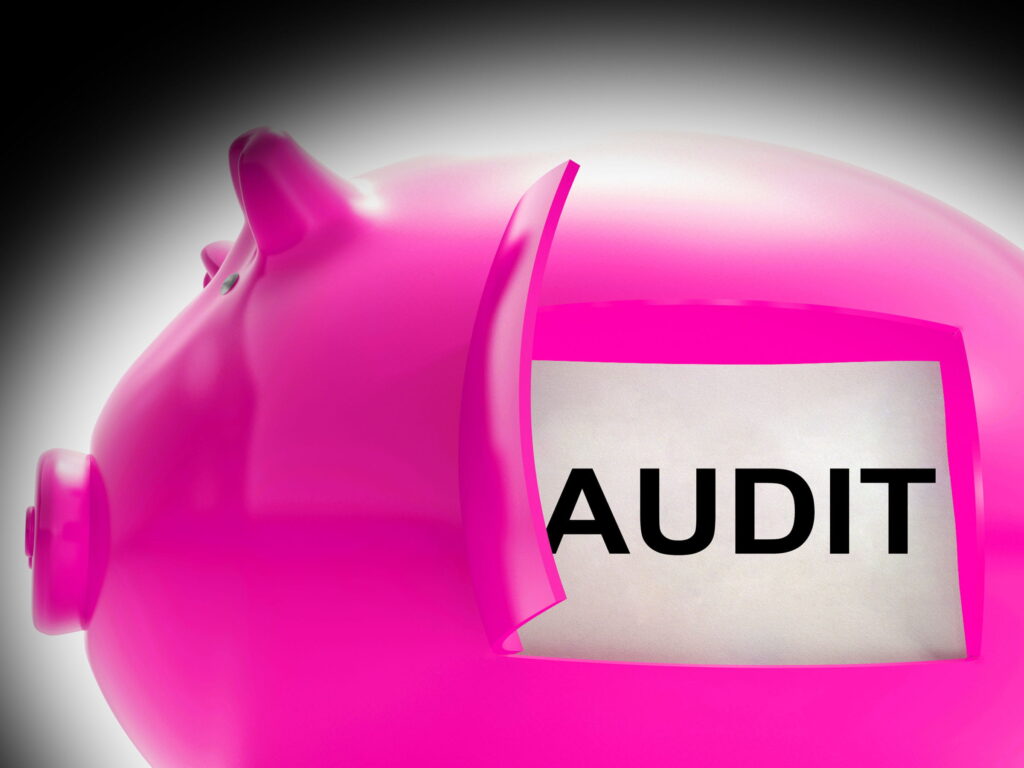
By now, you probably have hundreds of contents on your site. There may be some good or bad, and you can’t imagine the ridiculous amount of time you’ve invested in developing them. Now, how are you tracking the content that are efficiently performing? Are you using the metrics here to improve your future content? If you do not have this type of content management, you should consider implementing a content audit into your system.
What is a Content Audit Process?

Website content audit is the process of analyzing the content of your website. It includes not only the landing page but also your blog posts; it is the inventory of your site’s assets. This method provides you an insight into different vital metrics, which will help you understand which content you should delete, rewrite, update, or develop.
What Are Your Goals When You Conduct a Content Audit?

Running this process into your website offers several benefits to your business. It increases the volume and the quality of your website. It also improves the experience of your online audience.
- Looking for Unoptimized Content- It helps you identify the areas of your website that are not optimized for search engine sites. For instance, a blog post might be missing a meta description. Perhaps you have been focusing on a different keyword before, and you want that to add to your old blogs. With this method, you will know which content you need to find and optimized.
- Determine SEO Opportunities- With a web content audit, you can implement the latest SEO strategies to your old content. For instance, you would probably want to add your keyword to the start of the article’s title. Introducing your focus keyword to the heading is like sending clues to the search engine robots on what the theme is all about.
- Update Content- Another possible reason you want to perform an audit is to refine your outdated content. By doing so, you will be improving the accuracy and knowledge of your site. For instance, a hyperlink on the article may have been broken. By auditing this, you are reminding your content manager to update and fix the broken links.
What Are the Benefits of Content Audit?

This method allows you to keep your assets fresh and up to date. It is also sending a signal to the Google spiders to improve the rank of your webpage on specific keywords. Also, your audience will find it easier to read and navigate your website if you regularly conduct a content audit.
- It sends a clearer signal to the search engine robots and the audience of what you are offering.
- Know what your online audiences are looking for.
- Identify contents that are efficiently performing, which you can add to your marketing material.
- Determine articles or content that you can repurpose.
- Provide you with the data associated with the performance of the content. It allows you to implement intelligent decisions wholly based on facts rather than relying on your assumptions.
How Do You Conduct a Content Audit?

Before you run a website content audit, it would be best if you create a template. It should serve as your guide when checking your website’s on-page SEO. Add notes on each blog post to determine how you are planning to update it.
Consider Your Goals

We have mentioned some of your possible goals above. You want to know what you need to accomplish before you even start with this process. When you keep your goals in your mind, it would be easier to categorize the audit. You will find it faster to proceed with each step. Moreover, it should include details that will help you determine the types of content that your audiences find engaging. You may also add information such as your conversion rate or engagement rate. One of the primary goals would be identifying the articles that need to be optimized for search engines. Others will perform a web content audit to identify the top-performing content and the articles the audience finds most engaging.
Gathering the Assets for Content Audit

Next, you need to know the pieces of content that you want to audit. Generally, the website asset you need to audit are blog posts, product descriptions, headlines, publications, and multimedia. You need to decide this beforehand and gather all the backlog of your content. To do this, add the URL of the content that you plan to audit. If you have a small website, you can do it yourself by adding the web address into your template or spreadsheet.
Nonetheless, you can also streamline the content audit process using tools like Hubspot, Screaming Frog, and SEMrush. To use Screaming Frog and SEMrush, you need to have a sitemap. A sitemap is basically a file that contains all the information about your website. You can easily create this online.
Create a Category for Your Content

Now that you received your audit, you should create a category in a spreadsheet. There are online tools that will help you categorize your content. Nonetheless, it is totally doable if you choose to do this manually. Categorizing can make the website content audit process more organized. With this, you can ensure that your audit can successfully meet your needs. You can add to your template or spread sheet categories: content format, publication date, authors, and content type. Think of any sort that will be useful to you. For instance, you could add the metadata, update, or the publication date if it is a blog article.
You should also think of other critical categories related to metrics. Some tools will automatically include them in your audit. However, you can also use Google Analytics to pull the data automatically. Metrics can also be used for the analysis that you will perform later. At the very least, it must contain the URL, metric data, metadata, and content categories.
Data Analysis

At this stage, it is time for data analysis. It will provide you with a specific measurement to determine the current state of the content. Here are some things that you need to pay attention to when performing your content audit.
- Content that has been performing very well.
- Old and outdated content that requires to be updated. You may want to rework the optimization of this asset.
- Content that may not be getting the numbers that you want.
- Missing content or the content that you have not yet covered.
After evaluating your content, you should also organize them in a separate spreadsheet. You could also use a color-coding system to highlight a specific category.
Finalizing the Content Audit

At this part, it is now time for you to clean your audit. Based on your analysis, you should know which content requires your focus. Start with the posts that you need to delete since this is the most straightforward task to complete. You should then proceed on the content that you shoulder-structure, update, or rewrite; we refer to them as ‘action items.’ You can rank them according to priority. If you also plan to add a timeline, this stage would be an excellent time. Some content creators will create a comprehensive content calendar, while others will not. It all depends on how you plan to conduct a content audit.
Using Content Audit Tools

As we mentioned before, using online tools and software is optional. If you have time and you want to do this manually, a website content audit is doable. Perhaps the main benefit of using an audit tool is that it speed-up the process. Rather than collecting your URL manually, different tools can gather them together with the key metrics automatically.
Screaming Frog
This tool is originally a website crawler tool. It will collect all the URLs in your sitemap and conduct an SEO audit. Screaming Frog will be a good option for those who have a small site. It will audit the first 500 links for free. It comes with a desktop program that provides a vast volume of analysis of your website and will categorize them on your behalf. If you choose to conduct a content audit, the SEO analysis that comes with it will help you improve your SEO strategy.
Casted
With Casted, you will understand how your audiences engage with the podcast content. It helps you create actionable decisions on your website content audit that will improve your engagement. If you are using HubSpot, you can integrate this tool with the Marketing Hub. The CRM tools that come with it will develop a form that will help you capture leads and nurture them.
SEMrush
In just three simple steps, SEMrush will perform a comprehensive web content audit for you. Add the URL of your domain, and you will receive intensive research that shows the area that requires improvement. If you need more in-depth information, you can also connect it with other analytical tools, such as Google Analytics. The data that you will gather can be used to improve your marketing and content creation strategy. Knowing the content that performs well gives you an idea of what content you need to cover.
Google Analytics
This list will not be complete without Google Analytics. While it may not provide you with the conventional web content audit, the information can still be essential to develop a robust analysis. It allows you to see where the traffics is coming from. Google Analytics also helps you understand the audience’s behavior. It enables you to see how long people are staying on your website.
Now that you have enough wisdom about the content audit, you should already know the essentials you must include, where you can source them, and how to create them. You should also be able to incorporate them into your web assets. Be sure to try this method and see how it can help you elevate your content to the next level.



Thank you a bunch for sharing this with all people you really recognize what you’re
talking about! Bookmarked. Please additionally consult with my site =).
We will have a link alternate contract among
us
Also visit my webpage … nordvpn coupons inspiresensation
I have learn some just right stuff here. Certainly price bookmarking
for revisiting. I wonder how much attempt you place to create such a
great informative web site.
Look into my site; Nordvpn coupons inspiresensation (cia.sh)
350fairfax nordvpn coupon code
Please let me know if you’re looking for a article writer for your
site. You have some really great articles and I think I would be a good asset.
If you ever want to take some of the load off, I’d absolutely
love to write some articles for your blog in exchange for a link back to
mine. Please blast me an email if interested.
Many thanks!
I all the time used to study paragraph in news papers but now
as I am a user of net therefore from now I am using net
for posts, thanks to web. https://tinyurl.com/235hnz7u gamefly free trial
Magnificent site. Lots of helpful info here. I’m sending it to a few pals ans additionally sharing in delicious.
And of course, thanks to your sweat! What is a vpn and how does it work https://tinyurl.com/2c2rno87
obviously like your web site but you have to test the spelling on several of your posts.
Several of them are rife with spelling issues and I in finding
it very troublesome to tell the truth nevertheless
I’ll definitely come back again.
I loved as much as you’ll receive carried out
right here. The sketch is tasteful, your authored material stylish.
nonetheless, you command get got an shakiness over that you wish be delivering the following.
unwell unquestionably come further formerly again as exactly the same nearly very often inside case
you shield this hike.
Yesterday, while I was at work, my cousin stole my apple ipad and tested to see if it
can survive a 40 foot drop, just so she can be a youtube sensation. My iPad is now
destroyed and she has 83 views. I know this is entirely off
topic but I had to share it with someone! https://tinyurl.com/yvodnsan eharmony special coupon code 2025
If some one wishes to be updated with hottest technologies afterward he must be visit
this web site and be up to date all the time.
Check out my blog https://tinyurl.com/3zcr8enu
Fans von Slots und klassischen Casino Titeln können hier von einer breiten Auswahl an Spielen, einem exzellenten Kundensupport und schnellen wie sicheren Transaktionsmöglichkeiten profitieren.
In puncto Kundenservice bietet das Happy Hugo Casino einige Optionen,
darunter E-Mail, Live-Chat und ein Ticketsystem. Um eine Auszahlung vorzunehmen, gehen Sie einfach auf die Seite “Kasse” oder “Banking” und wählen Sie die Auszahlungsoption. Ferner ist dies aber hier
auch eines der besten Echtgeld Casinos, das man unter aktuellen Online Casinos Deutschlands vorfinden kann.
Jedes Level bietet, wie wir gesehen haben, eine Vielzahl von Belohnungen, wie z.B.
Bei einem Willkommensbonus müssen Sie sich zum ersten Mal anmelden und eine erste Einzahlung tätigen.
Freispiele sind ebenfalls himmlisch, mit monatlichen Boni auf ausgewählte Slots.
Neuankömmlinge erhalten 100% bis zu 300 € + 50 FS auf Starburst, plus 20 zusätzliche FS auf Book of Dead für
in Deutschland ansässige Weltraumreisende – das ist Happy Hugo Casino-tastisch!
Das Live-Casino bietet nahtlose Interaktion mit den Dealern, und Crash-Spiele sind nachweislich fair.
Die Galaxy der Spiele in diesem Casino ist riesig und aufregend und bietet beeindruckende 3.800+ Titel von führenden Anbietern wie NetEnt, Play’n GO und Pragmatic Play.
Aktivieren Sie Benachrichtigungen in Ihren Kontoeinstellungen und melden Sie sich für unsere E-Mail-Updates an, um sicherzustellen, dass Sie frühzeitig Zugriff
erhalten. Als neuer oder bestehender Spieler erhalten Sie mit diesen Codes
Zugriff auf Sonderboni, Freispiele und andere Angebote, die nur denjenigen zur Verfügung stehen, die sie verwenden. Wenn Sie eine Einzahlung tätigen, die den Anforderungen entspricht, erhalten Sie automatisch Freispiele.
Melden Sie sich auf der Aktionsseite an und spielen Sie Qualifikationsspiele,
um teilzunehmen. Bei diesen Wettbewerben werden viele schöne Preise verschenkt, wie Freispiele, Bargeld oder Boni, die direkt Ihrem Konto
hinzugefügt werden. Neue Spieler können sofort ein Willkommenspaket
erhalten, das kostenlose Freispiele für bestimmte Slots
beinhaltet.
References:
https://online-spielhallen.de/ice-casino-bonus-code-ihre-eintrittskarte-zu-fantastischen-angeboten/
Für das Automatenspiel kann die Kleidung etwas legerer
sein, allerdings ist hier dennoch gepflegte Freizeitkleidung erwünscht.
Beim französischen Roulette spielt man mit Jetons, die einen festen vorgegebenen Wert haben. Das
Kurhaus mit integriertem Casino wurde zum Inbegriff europäischer Bäderkultur.
Eines der Extraklasse ist in Baden-Baden im Schwarzwald zu finden.
Das Casino Baden bietet auch Online Glücksspiele mit Echtgeld an. Darüber hinaus
kannst Du im Baden Casino das spannende Würfelspiel „Big Shot“ kennenlernen, beim „Easy Poker“ gegen den Dealer antreten oder Poker als Cashgame und
in der Turniervariante spielen. Bei den Tischspielen ist
eine gute Auswahl unterschiedlicher Spiele vorhanden, auch
wenn leider nicht immer alle Tische durchgehend geöffnet sind.
Zusätzlich gibt es noch den „Baden Mystery Jackpot“, um den Du an fast 200 der Slots bereits ab einem Einsatz von nur 5 Rappen spielen kannst.
Aus dem ursprünglichen Interesse an traditionellen Glücksspielen und Poker entstand ein Startup, das
heute ein erfolgreiches Unternehmen im Glücksspiel-Bereich ist.
References:
https://online-spielhallen.de/stake-casino-bonus-code-ihr-weg-zu-exklusiven-vorteilen/